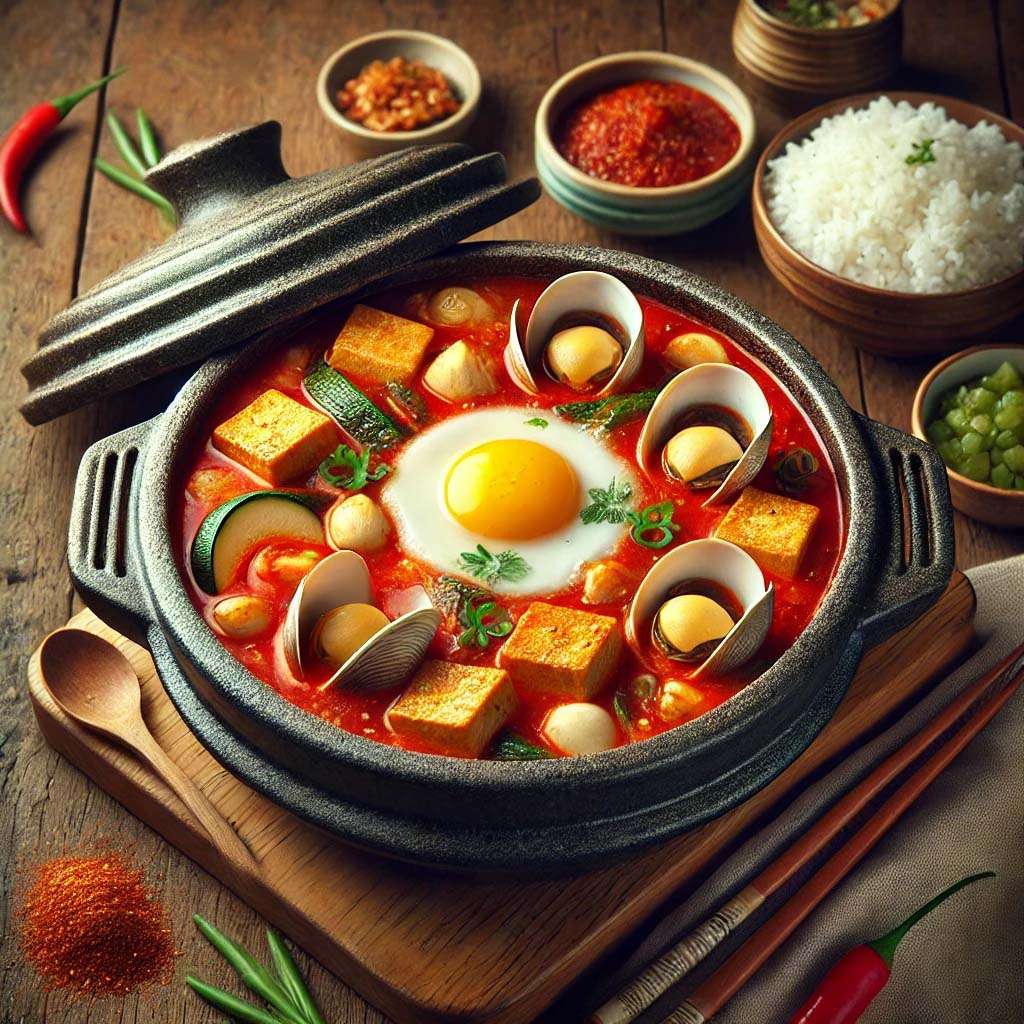Kimchi Bokkeumbap (김치볶음밥)
Sundubu Jjigae, or Soft Tofu Stew, is one of Korea’s most popular and beloved comfort foods. It features silky, uncurdled tofu in a spicy, savory broth, often enriched with seafood, meat, or vegetables. This dish became widely popular in the mid-20th century as Korea’s culinary culture evolved to include quick, hearty meals suitable for busy lifestyles.
The dish’s origins are rooted in Joseon-era Korea, where simple tofu dishes were common in rural areas. The use of soft tofu, known as sundubu, adds a smooth texture that contrasts with the bold spiciness of the broth. Today, Sundubu Jjigae is served everywhere, from home kitchens to specialized restaurants, and is often paired with a raw egg cracked into the bubbling stew for added richness.

Ingredients (Serves 2):
Main Ingredients:
- 1 pack (300g) soft tofu (sundubu)
- 1/2 cup clams or shrimp (optional)
- 100g pork belly or ground pork (optional)
- 1/2 small zucchini, sliced
- 1/4 onion, sliced
- 1 green onion, chopped
- 2 cups anchovy or chicken broth
- 1 egg (optional)
Seasoning:
- 2 tablespoons gochugaru (Korean red pepper flakes)
- 1 tablespoon sesame oil
- 1 tablespoon soy sauce
- 1 clove garlic, minced
- 1 teaspoon sugar (optional)
Instructions:
Prepare the Base:
Heat sesame oil in a pot over medium heat. Add the minced garlic and gochugaru, stirring until fragrant (about 1 minute).Add the Protein:
If using pork belly or ground pork, add it to the pot and stir-fry until cooked. Then add the clams or shrimp (if using).Build the Broth:
Pour in the anchovy or chicken broth and bring to a boil. Add the soy sauce, sugar (if using), zucchini, and onion. Simmer for 5-7 minutes.Add the Soft Tofu:
Gently scoop the soft tofu into the stew, breaking it into large chunks. Simmer for another 5 minutes.Crack the Egg:
Crack an egg directly into the bubbling stew (optional) and garnish with chopped green onions.Serve:
Serve hot in a stone pot or bowl, accompanied by steamed rice and banchan (side dishes).



